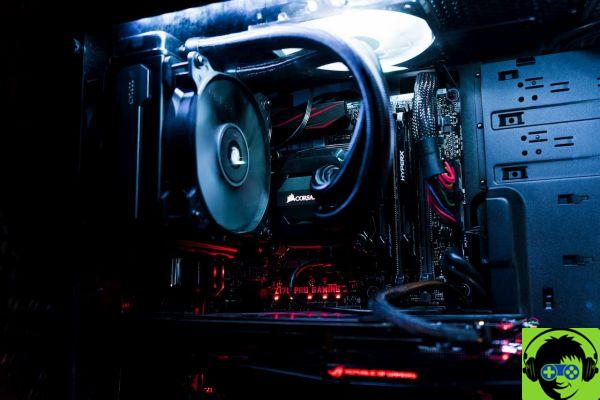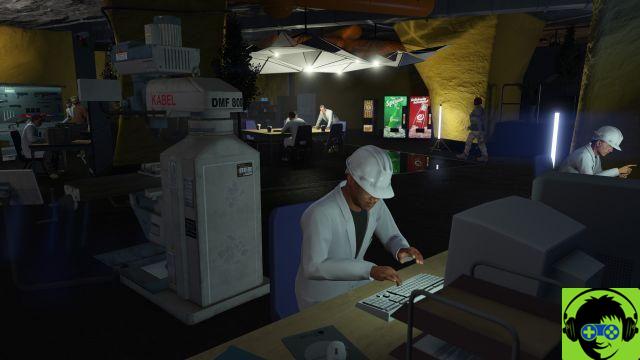
Warning: Overclocking is an advanced procedure that can ruin your hardware. Overclock at your own risk.
Overclocking a processor allows you to get a bit more power out of your hardware, potentially allowing your PC to run games a bit better. While it's not without risk, it can be a great method of getting a little extra life out of older processors, or getting the most out of any new processor you buy.
When should you overclock your CPU?
There is no correct answer to this question. Your CPU doesn't need to be overclocked, but it's something people will do on a regular basis to get better performance. In our experience, overclocking can be a great way to extend the life of a build if you need more time to save for a new PC. It's also a great way to get started with a new PC and get the best possible performance for your money. You can of course overclock your CPU at any time.
Can you overclock all processors?
CPUs can only be overclocked if they have an unlocked multiplier. Some processors will be locked and therefore cannot be overclocked. To find out if your processor can be overclocked, you'll want to check the specifications for that specific processor on the manufacturer's website. For the most part, Intel chips with a K can be overclocked, and AMD FX and Ryzen chips can be overclocked. Be sure to check the manufacturer's sites if you have any doubts about your own make and model of CPU.
How does overclocking work?
Many processors have a little more free space than the clock manufacturers will place on them. This is because Intel and AMD ship processors at a speed that guarantees stability. Due to the nature of the manufacturing process, there may be different headroom for more speeds on different batches, but it is important for companies to sell them at set clock speeds and prices so that consumers can make informed choices when purchasing a processor.
There are two methods of overclocking a CPU, either using BIOS / UFEI or using software which each have their own advantages and risks. This is where we start to expose ourselves to the potential dangers of overclocking.
Is overclocking safe?
Yes and no. Overclocking is safe when done with care, but depending on the overclocking method, overclocking skills, PC cooling solutions, and other factors, there may be some risk. The main risk concerns the stability of the PC. If you overclock it and it starts to crash a lot, then it's a bad overclock. At the far end of the scale, if you're doing something like manipulating the voltage from the motherboard to the CPU and increasing it too much, you might need to get a new CPU.
Another factor is that some CPUs will remain stable with a higher overclock than an identical CPU, due to the aforementioned issues with chipmaking. Again, this is why manufacturers sell processors at set clock speeds that they know the whole lot can run with perfect stability. This means that you and a friend may have the same chip, purchased on the same day, but their overclock may not be stable on your CPU, or vice versa.
The last thing to consider is that overclocking will likely void your CPU warranty, so anything wrong will hit you right in the pocket.
A word about cooling your CPU
If you want to overclock your CPU, a new cooling solution may be needed. If you want to get more power from your processor, you have to expect more heat. To avoid potential issues like straying to approach your CPU's maximum temperate, known as TJ Max, you may need to upgrade your cooling. Products such as the Noctua NH_D15 or the Corsair H150i PRO may be needed to keep temperatures low for large over-clocks.
You should also run a program like Basic Temp as this will allow you to monitor your CPU temperature while using your computer which is very important after applying a new overclock.
How to overclock a CPU
Intel
For Intel processors, you can download the Intel Extreme Tuning Utility Software. It will allow you to change power, voltage, core, and memory settings that you will need to tweak to achieve a stable overclock. The software is easy to use, adds a layer of security to overclocking and will also allow you to test the stability of overclocking.
AMD
AMD users previously had two software options, depending on their processor. Ryzen owners can use the Ryzen Master Software. People who owned older AMD processors could use the Overdrive program, but AMD has now given up, and their advice is to upgrade to a Ryzen processor, unsurprisingly.
If this is your first time overclocking a CPU, a software solution would be recommended due to the safety factor as it limits the potential damage you could cause to your hardware.
How to overclock using BIOS / UEFI
It is also possible to overclock your CPU through BIOS. This is the method of choice for experienced overclockers, but lacks the built-in safety features of software provided by CPU manufacturers. However, it can give you a lot more control over the overclock.
The exact way to do this normally depends on the motherboard, so for a step-by-step guide you might want to look for a specific tutorial that covers the brand and model of the motherboard, in combination with the CPU you want to overclock.
Many modern cards will have a simple option to overclock, allowing you to easily apply a low level overclock, again this will depend on the card. It is advisable to spend more time than you need reading on the motherboard and CPU, as there is nothing like being overly prepared.
To access the BIOS, you must have a key during boot. This is normally Delete or F2, and will be displayed on the monitor during the boot process. Exactly how everything is laid out in the BIOS will depend on the card manufacturer, but you will be looking for an option to change the CPU multiplier, if there is no obvious overclocking option in the BIOS. Processors have a base speed and a multiplier, and by changing the multiplier, you can increase the maximum clock speed of the processor. You want to increase the multiplier to the smallest number possible, test the overclock for stability, and then increase it again.
The real risk of overclocking through BIOS lies in entering your base voltage. If you want more power from the CPU, you need to send more voltage to it. Modern motherboards should show you the recommended base voltage based on the multiplier, and that's the value you need to enter. If you are unsure of this value, take note of your standard manufacturer's clock base voltage and increase it very slightly from there. You can also search the internet to find the settings that other people have used for this type of CPU.
Playing with core tension is the real danger of overclocking, so we want to reiterate again how you should do a lot of research and be extremely careful at this point.
Run something CPU intensive, and if the PC doesn't crash, you're in the clear. You want to find a point where the PC crashes, then call it back for a bit, test again, and that's your new stable overclock.
Again, you want to be very careful with the CPU temperature, read all you can about the motherboard and the CPU, and try to find a dedicated video or tutorials written for overclocking that use the same hardware combination. that you are trying to overclock with for the best results.


























